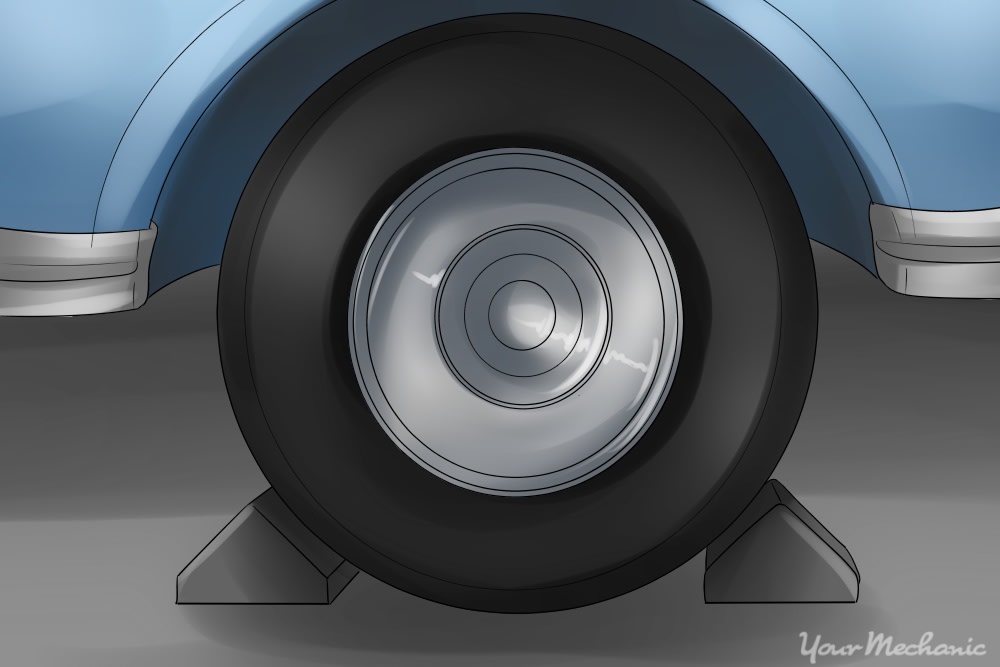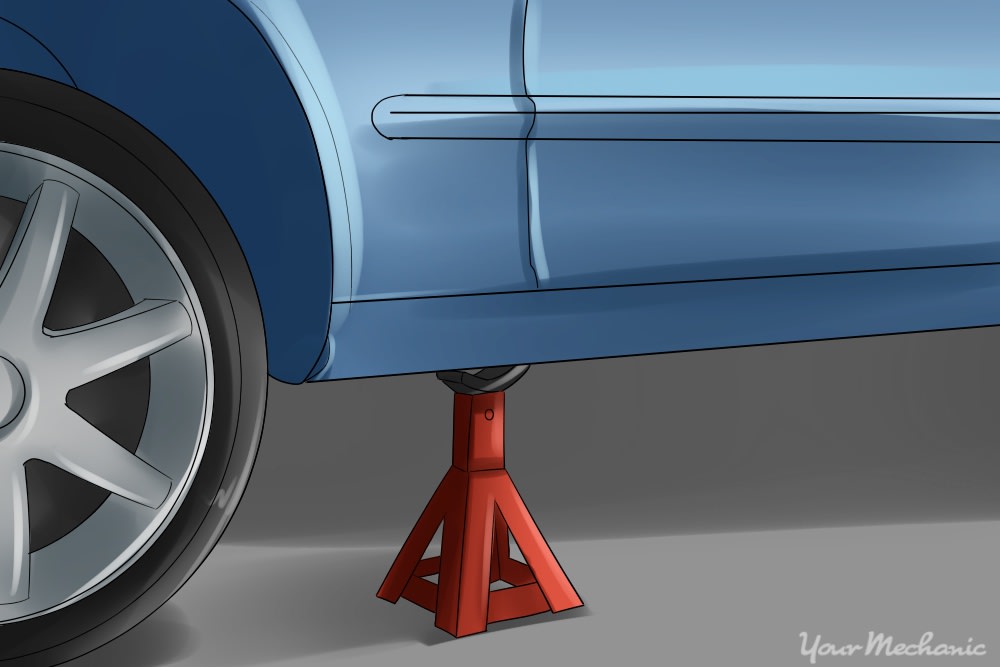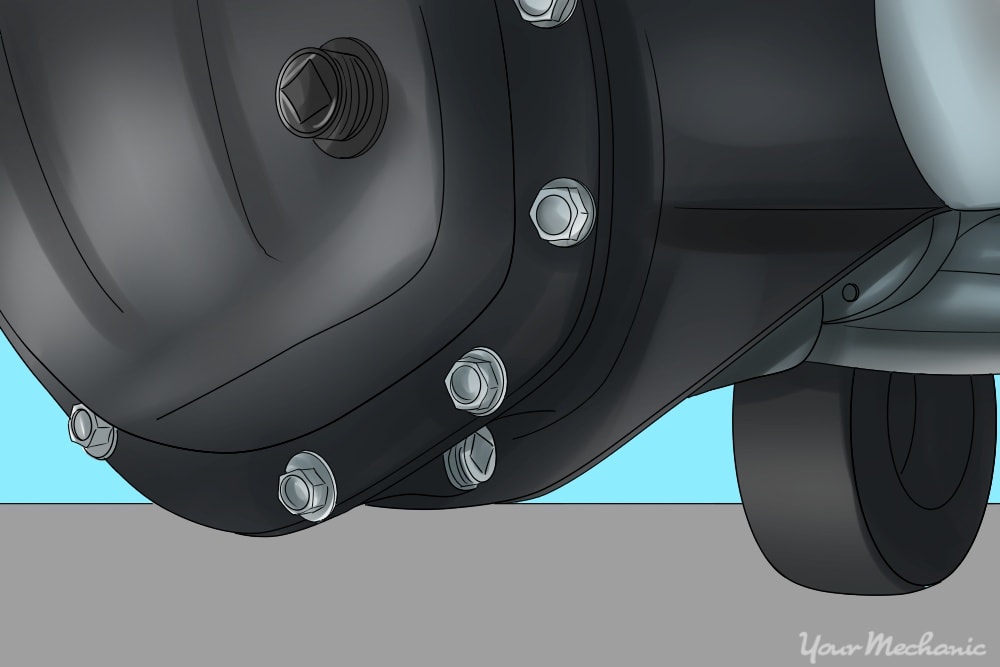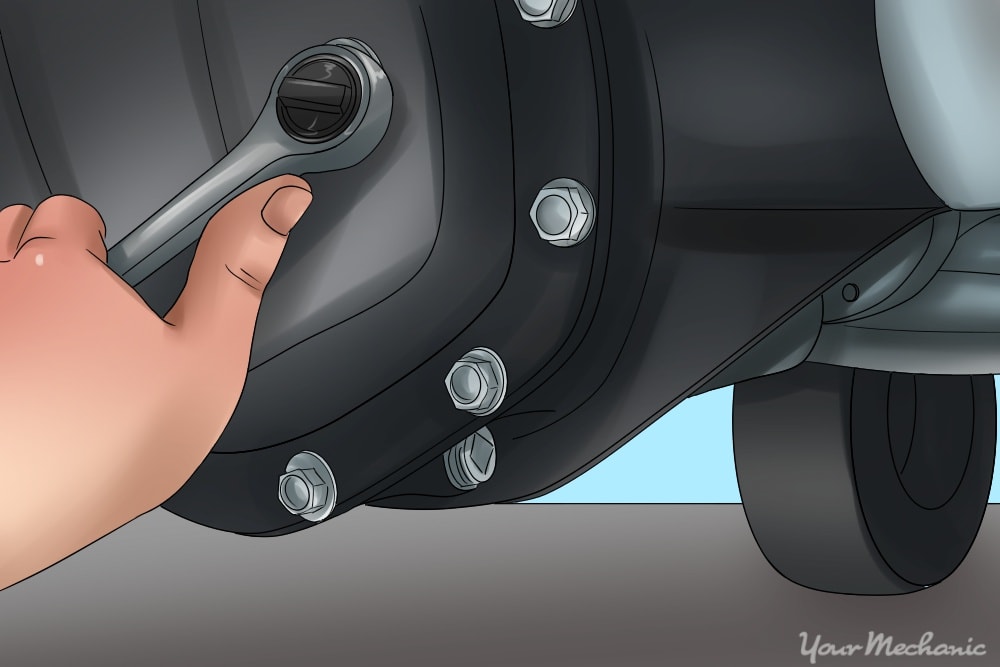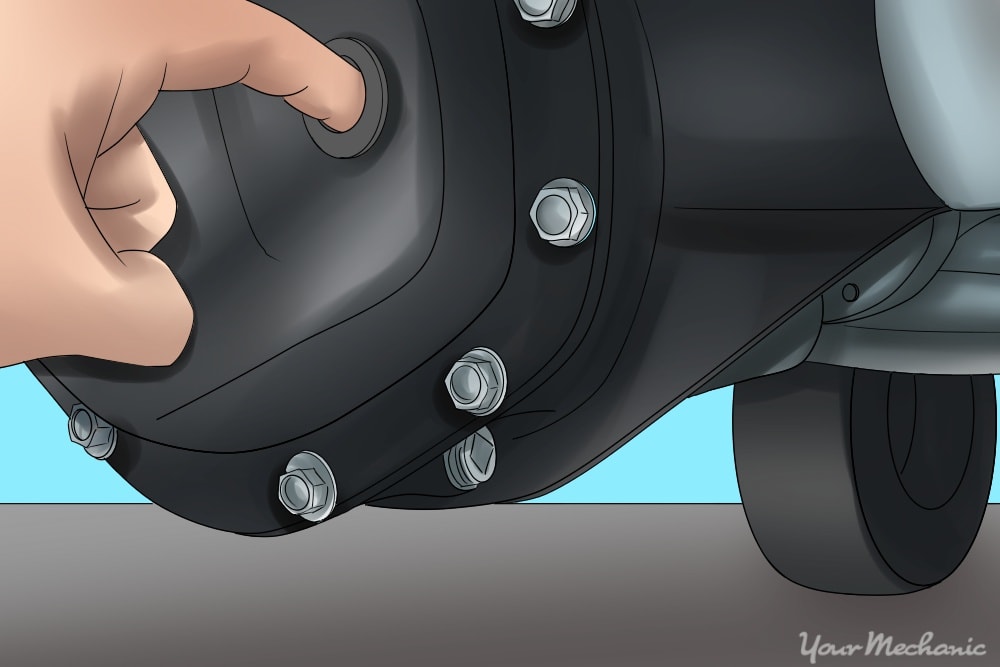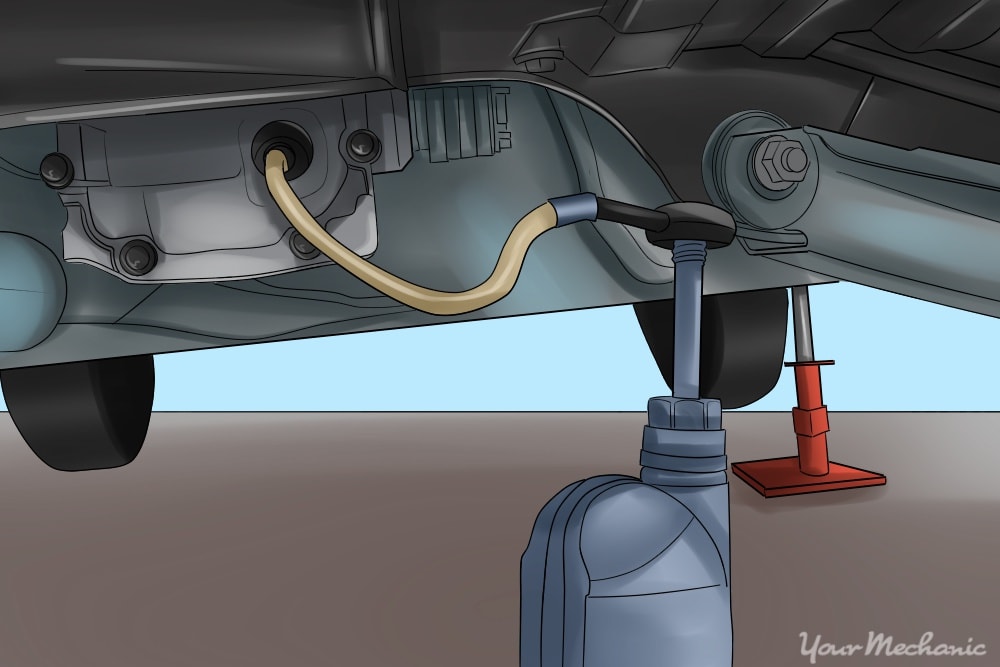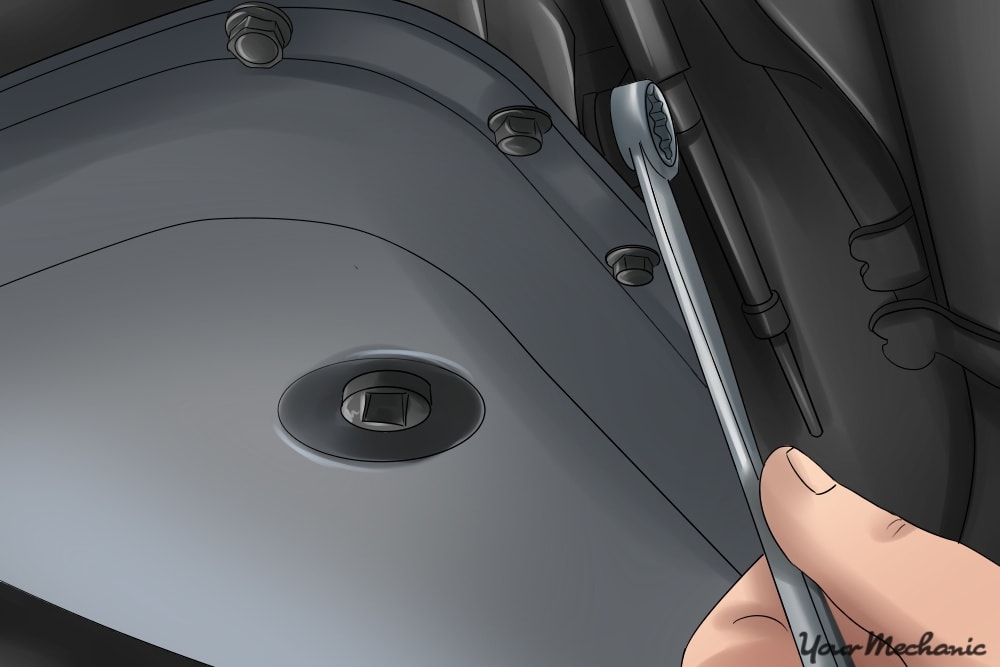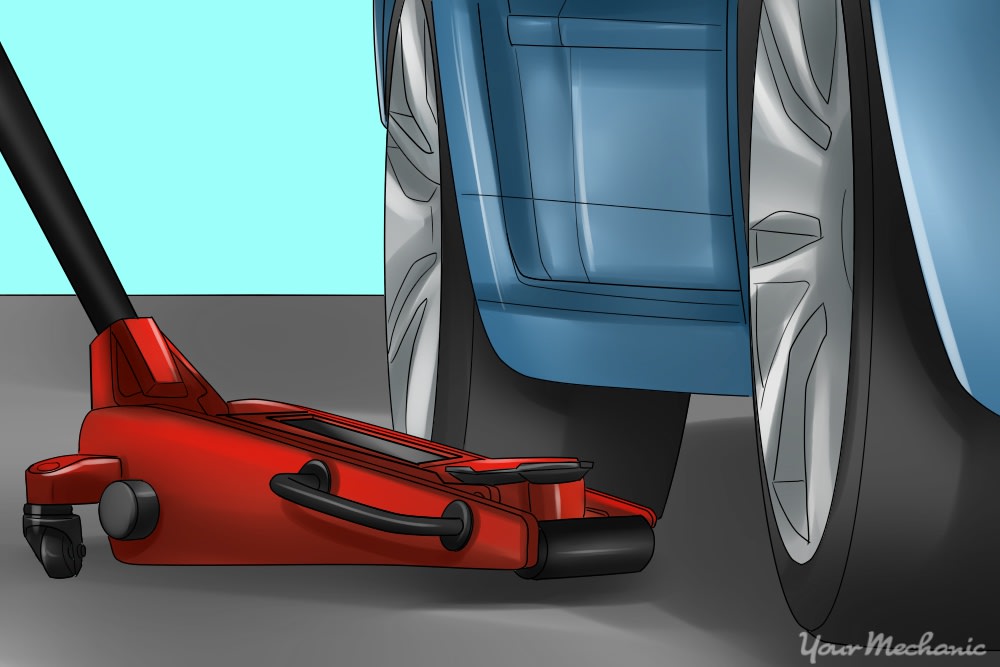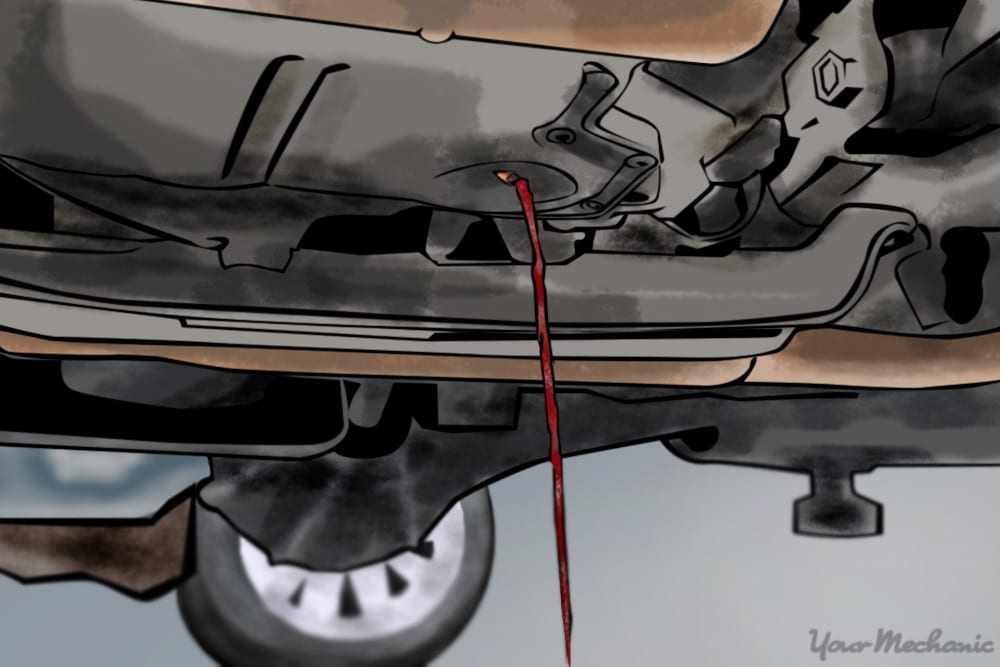

Transmission fluid is an important fluid in your car and needs to be topped up on a regular basis. If your transmission fluid is leaking, it can cause damage to your engine.
Checking the transmission fluid in a manual transmission car is slightly different than for those with automatic transmissions. Manual transmissions consist of internal gears, bearings, and synchronizers that are allow the driver to shift gears. Many manual transmissions are lubricated with a heavy petroleum-based oil. When this oil breaks down, its lubricating properties break down, which can make it harder for the driver to get the transmission into gear.
Part 1 of 1: Checking manual transmission fluid
Materials Needed
- Fluid pump
- Jack and jack stands
- Ratchet with sockets, standard and metric
- Torque wrench
- Transmission fluid
- Wheel chocks
Step 1: Position the wheel chocks. Place the wheel chocks around the rear tires.
Step 2: Jack up the vehicle. Using the hydraulic floor jack, lift the front of the vehicle one side at a time at the manufacturer’s suggested jacking points. Lift it just high enough for you to gain clearance underneath.
Step 3: Secure the vehicle with jack stands. Place the jack stands under the manufacturer’s lifting points and lower the vehicle onto the jack stands.
Step 4: Locate the fluid fill plug. Most of the time, the filler plug is a large bolt located about halfway up the side of the transmission.
Step 5: Remove the filler plug. Using the ratchet and the socket that fits snug on the filler plug, remove the filler plug.
Step 6: Check the fluid level. Check the fluid level per the manufacturer's specifications from a repair manual.
Most of the time, the level of a manual transmission is checked by placing your finger into the filler plug hole and seeing if you get some fluid onto the end of your finger. If you don’t, then the fluid is low. If there is fluid at that level, then no additional fluid is needed.
Step 7: Add the transmission fluid. Using the fluid pump, add fluid into the transmission through the filler plug.
Recheck the fluid several times until it is at the proper level.
Step 8: Replace the filler plug. Reinstall the filler plug and tighten it to manufacturer’s specifications.
Step 9: Lower the vehicle. Using the floor jack, lift the vehicle one side at a time and remove the jack stand. Then lower the vehicle to the ground.
Staying on top of your transmission fluid can save you from experiencing later transmission problems, so it is well worth knowing how to check and replace this fluid. However, if you are not familiar with the type of system your vehicle has or if you are not comfortable replacing the transmission fluid yourself, then you should consult the assistance of a certified mechanic, like one from YourMechanic. If you’re in doubt about how frequently to check your transmission fluid, you can look up your car to find out more about when your car needs to be serviced.



